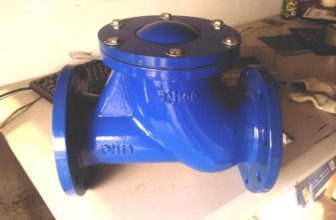[ad_1]

The globe valve body is the main pressure-bearing part of the valve and houses the closure element. The flow passage in the globe valve is designed to have a smooth arc inner wall without sharp corners and sharp edges, which can provide a smooth process flow without abnormal turbulence and noise. The flow channels themselves must have a constant area to avoid any additional pressure losses and excessive flow rates. Globe valves have wide two end connections, so the valve body is suitable for almost every kind of end connection, although its face-to-face dimension is too long to accommodate the flangeless structure (bolted valve between two pipeline flanges) body, which is common in rotary valves). Mismatched end connections are also acceptable for globe valves.
The spool of the globe valve is a closing element that is larger than the exact position (because the throttle valve is larger than the position that is just opened or closed, but it is better to say that the spool is a regulating element), which makes the valve change the flow rate according to the flow characteristics and the position of the valve . A typical spool consists of two key parts: the spool, which is the male part of the regulating element; the seat ring, which is the die part. The part of the spool that inserts into the seat ring is called the spool head, and the part that sticks out through the top of the globe valve is called the spool stem. There is a threaded button on the top of the spool rod so as to cooperate with the first wheel mechanism. The main advantage of the monotonic seated spool is its possibility of tight shut-off (in some cases better than 0.01% of the valve’s maximum flow). This condition is caused by the force of the manual manipulator acting directly on the bearing surface.
There are two sizes of spool in the manual globe valve: full spool, which is more commonly used and involves the area of the seat ring, which can pass a larger flow within the special size of the globe valve. On the other hand, a reduced-bore spool is used when it is desired that the valve throttle to less than the rated flow of the valve of that size. If a full spool is used, the seat must be throttled closed in small increments, but this is difficult to obtain with a hand operator. The preferred method is to use a small seat diameter and matching plug, which is called a reduced diameter spool.
The bonnet is an important element of the top work piece and provides a cap or cover for the valve body as a pressure containing part. Once it is installed on the body, it is sealed by the bonnet or body gasket. He also seals the plug stem with a stuffing box consisting of a series of packing rings, glands or guide covers. Packing spacers and anti-extrusion rings to prevent small leaks of process media to the atmosphere. Installed on top of the stuffing box is the gland flange, which is bolted to the top of the bonnet. When the gland flange bolts are tightened, the packing is compressed and seals the stem and bonnet bore.
Keeping the plug head centered with the seat ring is important for tight shutoff. To maintain this alignment, one of two guiding mechanisms can be used: a double top stem guide or a seat guide. Double top stem guides use two closure fittings to guide at both ends of the stuffing box – keeping the hair and seat ring concentric. These guides may be integrally made of plug-compatible metal to avoid metal galling, or elastomeric or graphite bushings may be used. The structure of the two guides should be as far apart as possible to avoid lateral movement caused by the process fluid acting on the spool head. The guide, bonnet bore, and actuator stem must remain within tolerances when closed to maintain a fit that will result in smooth linear motion without binding and splashing fluid.
Another common guide type of manual globe valve is the seat guide structure. Here the plug stem is supported by an upper guide (which acts like a packing gland). The outside diameter of the plug head extension acts as a second guide surface to guide the seat. This means that the lower guide surface remains within the flow layer, so the process media is cleaner. The lower part of the valve core head has an opening, which allows the flow to move through the valve core head to the valve seat during the opening process of the valve seat. Changing the size and shape of these openings affects the curtailment and flow characteristics. Because the length between the upper and lower guides is at the greater length, side cock movement due to process flow is not an issue, and the tolerances required for this type of guide, unlike double top stems as strict as the director. This construction reduces the chance of any vibration of the spool during operation. When the valve plug and seat are made of the same material, metal surface wear may occur during long-term or frequent operation. High temperatures can cause thermal expansion and strain.
The above content is the basic introduction and design of the manual globe valve shared with you today. After reading it, do you have a basic understanding of the manual globe valve? I must have a certain understanding of the design of the manual stop valve, let’s collect it~
[ad_2]




